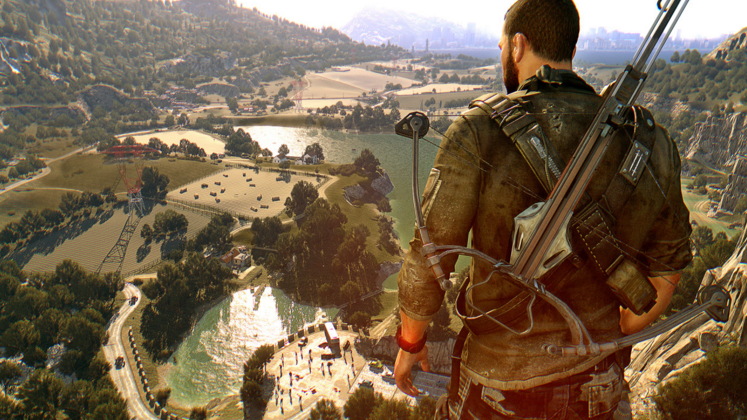
The RX 580 shows its age in a big way in Dying Light 2. I wasn’t anywhere close to 60 fps at 1080p, even with recommended settings. But 1440p is the baseline for Dying Light 2, with native 4K only reserved for the most powerful hardware. With recommended settings, the RTX 2060 Super manages nearly 60 fps at native 1440p, and the RTX 3070 nears 100 fps. Thankfully, the plentiful upscaling options make 4K possible on the RTX 3070, and with my recommended settings, you can squeeze out even more performance.īumping down to 1440p was much more forgiving, which isn’t surprising, as 1440p is still the sweet spot for native resolution.

If you want native 4K, the RTX 3080 will do much better. With the RTX 3070, I couldn’t manage native 4K at 60 frames per second (fps), even with the recommended settings. I ran all of the cards through my test bench with an AMD Ryzen 9 5950X and 32GB of memory.
#Dying light only work in fullscreen Pc#
It can run on the hardware of today, but it’s built for the hardware of the future, especially if you want all of the visual bells and whistles.Īs I typically do with PC performance guides, I grabbed three graphics cards for three common resolutions - the RTX 3070 for 4K, the RTX 2060 Super for 1440p, and the RX 5p. Dying Light 2 performance, testedĮnough with settings and system requirements - let’s talk performance! It’s rare to find games that feel next-gen on PC, but Dying Light 2 fits the bill. You can reach the performance bars set by the system requirements, but it looks like Techland factored in the aggressive Performance mode for DLSS, not the Quality or Balanced modes. Based on my testing, the recommendations are just a little underpowered.

Techland recommends the eight-core Ryzen 7 3700X for the top spec, but a six-core chip like the Ryzen 5 5600X will work just as well.įor graphics cards, Techland is leaning heavily on DLSS. A decent quad-core from the past few generations will get you by, though a six-core CPU is ideal. You need something like DLSS.įor the other system requirements, most of them check out. Ray tracing is incredibly demanding in Dying Light 2. It’s beautiful, but impossible to run at native resolution. The system requirements have some interesting quirks, though.Īll of the three ray tracing presets call for Nvidia’s Deep Learning Super Sampling (DLSS), and there’s a reason for that, as I’ll dig into in the following sections. At minimum, you’ll need a GTX 1050 Ti, and if you want ray tracing and 4K, you’ll need at least an RTX 3080. Like Back 4 Bloodand a number of other games released over the past year, Dying Light 2 has five different lists of system requirements. If you need motion blur, leave the setting at low. I always turn motion blur off, and I recommend you do so in Dying Light 2. Turning off motion blur not only looks a lot better, but it can also increase your frame rate by around 8%. The other interesting note is motion blur. The game looks much flatter, and there isn’t a big difference in performance between the low setting and turning off ambient occlusion entirely. I wouldn’t recommend turning ambient occlusion off. I was content to turn ambient occlusion down to low because the visual change isn’t as stark. I left fog quality at medium because the low setting really tarnishes the atmosphere. The other important settings are ambient occlusion and fog quality, which both brought about a 10% increase in average frame rate.

Reflections are important, render mode is the most demanding setting based on my testing. Simply switching to DirectX 12 brought back an extra frame, while reflection quality brought nearly a 13% increase in my average frame rate. Dying Light 2 is more taxing than most games, though, so I pushed some settings down to low.įor easy wins, change the render mode to DirectX 12 and bump reflection quality down to low. Normally, I try to find a balance between image quality and performance, which generally leads to a mix of medium and high settings. I ignored ray tracing for these settings to get a baseline. Here are the best graphics settings for Dying Light 2: After testing each of the settings and tweaking the biggest losers, I was able to increase my frame rate by nearly 33%. The best settings for Dying Light 2ĭying Light 2 doesn’t have a lot of graphics options, offering a nice change of pace from the stuffed menus in titles like Call of Duty: Vanguard. Those few settings offer a lot of bandwidth, though. The three upscaling options offer a lot of bandwidth for low-end hardware, thankfully, though their trade-offs in image quality may be too big to stomach. The game’s massive open world is demanding on even the latest hardware, so you’ll need a beefy PC to run Dying Light 2 with ray tracing.

Ray tracing performance in Dying Light 2.


 0 kommentar(er)
0 kommentar(er)
